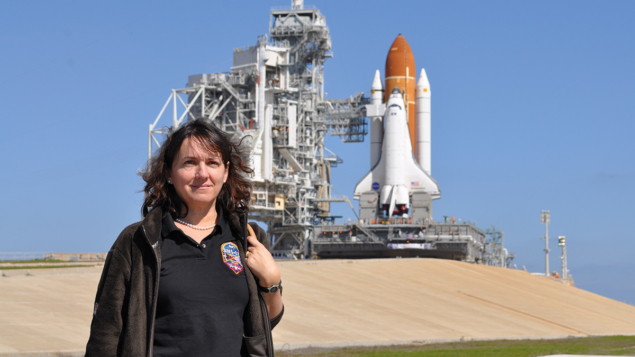
Sylvie Rosier-Lees left us on 14 March 2022 following a long illness, which she endured with immense courage. Following her studies at the Ecole normale supérieure de Fontenay-Saint-Cloud, Sylvie began her research career in 1985 with a thesis on the L3 experiment at LEP. There were several of us – new to the Laboratoire d’Annecy de Physique des Particules (LAPP) at the time – with the idea of strengthening the existing L3 team, and Sylvie was our first student. Her inquisitive mind, tenacity and ability to face experimental problems – in particular concerning the calibration of the BGO crystals – quickly made her stand out within the collaboration.
Before becoming a highly regarded specialist in supersymmetry, she studied the identification of B mesons produced in Z decays, which made it possible to contribute to the first measurements of the B°–B° mixing parameter as well as the forward–backward asymmetry. Supersymmetry and the search for the neutralino set Sylvie on the quest for dark matter, to which she subsequently dedicated her entire career. In 2000 she joined the Alpha Magnetic Spectrometer (AMS) collaboration – a particle-physics detector installed on the International Space Station to identify and measure fluxes of cosmic rays. She took over responsibility for the readout electronics of the electromagnetic calorimeter, introducing independent rapid triggering based solely on calorimetry. Resistance to radiation, extended temperature range, low power consumption and operation in vacuum were all technical challenges that were met thanks to Sylvie’s scientific rigour and exceptional human qualities. She had an enthusiasm and leadership that motivated and led to the success of everyone in her team. More than 15 years after its completion in 2005 and more than 10 years after its first signal on 19 May 2011, the calorimeter’s electronics are still smoothly providing data. With AMS, she searched for dark matter via deformations of antiparticle fluxes, for example in the fraction of positrons detected, one of the first AMS publications
In 2005 Sylvie created a HESS group at LAPP. The Namibia-based gamma-ray telescope had entered its second phase with the construction of the fifth telescope, the largest with a focal length of 36 m. Sylvie took up the challenge of an ambitious mechanical project to load and unload the camera – a cube 2.5 m high and weighing 2.6 tonnes – from its data-taking position 5 m from the ground to a shelter at ground level. She then explored the potential of the facility for dark-matter searches, since its size allowed the detection threshold of photons to be lowered to 50 GeV.
Throughout her career, Sylvie maintained close ties with phenomenologists and theorists. This collaboration began at LEP within the framework of a national supersymmetry group, where she coordinated an influential working group on the Minimal Supersymmetric Standard Model. Subsequently, with theorists, she obtained a lower bound on the mass of the lightest neutralino, a candidate for dark matter, by combining astrophysical, cosmological and collider observables. She also notably contributed to the development of an extension of the still widely used micrOMEGAs code, making it possible to calculate the spectrum of positrons and antiprotons coming from the annihilation of dark-matter particles in the galaxy.
Always positive with students, Sylvie supervised or co-supervised around 10 theses. All these elements earned her the 2017 Joliot-Curie Prize awarded by the French Physical Society. Her enthusiasm, energy and good humour are sorely missed. We are thinking of Jean-Pierre, her husband, and her sons Edouard and Arthur.








